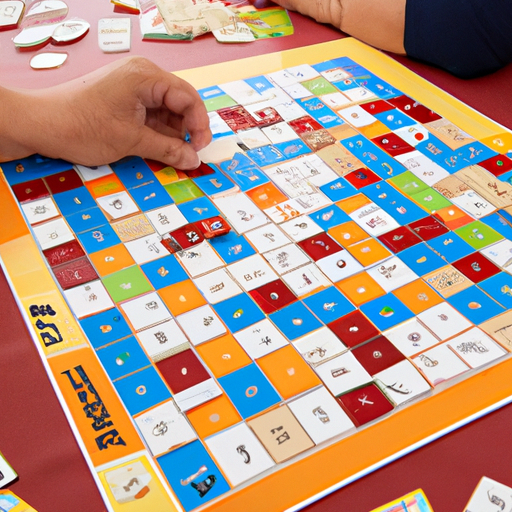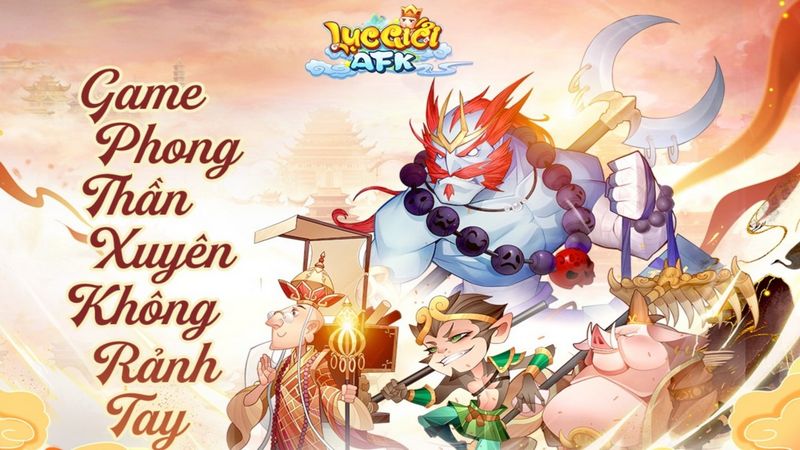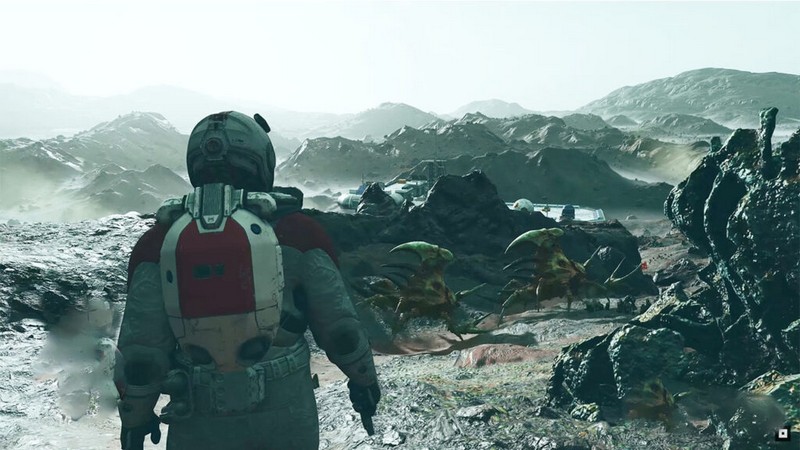Guess Who is a classic board game designed for two players. Players take turns asking questions and guessing their opponent’s mystery character out of a line-up of 24 possible characters. The player who correctly guesses their opponent’s character first, wins the game. This article will provide detailed instructions on how to assemble and set up the Guess Who board game in order to begin playing. It will cover topics such as unboxing the game, laying out the pieces, assembling the game board, preparing the character cards, and getting ready to play. By following these instructions, it should be easy to get started with this exciting game!
Unbox the Game
Upon unpacking the contents of the box, one can begin to prepare for playing Guess Who?. It is important to unbox the game in a methodical manner, taking care not to damage any components or lose any pieces in the process. The first step is to remove all of the contents from the box and spread them out on a flat surface. This will allow one to account for all components included with the game. The main components of Guess Who? include two sets of 24 character cards and stands, various colored pegs and markers, and two double-sided game boards featuring characters on both sides.
Once all pieces have been accounted for it is important that an adult closely inspects each component for damage or defects such as tears or missing pieces before beginning play. If any items are found to be damaged or defective, these should be replaced before starting the game. Additionally, it may be helpful at this stage for an adult to separate each set of characters into their own piles based on their colors so that they may more easily be sorted during play.
The next step involves carefully placing all character stands onto their respective slots on both sides of both boards while ensuring that they remain upright upon completion. Once this has been accomplished with no issues then players are ready to begin assembling their teams by placing matching colored pegs into each stand according to player preference.
Lay Out the Pieces
The game of Guess Who consists of several pieces that work together to create a fun and challenging guessing game. Character cards, score markers, and question markers are the main components that must be laid out to begin the game. Each component will provide players with clues as they attempt to identify their opponent’s character card by asking yes or no questions.
Character Cards
Carefully selecting the right Character Cards can create an exciting experience for all participants. The process of character selection for Guess Who? is a crucial part of game strategy and should be taken seriously. Character cards come in pairs with each pair containing two different characters with distinguishing features such as hats, glasses, hair color, facial hair and more. Players will first need to decide which set of characteristics they would like to have represented in their game. Some players may opt for the standard 24 card sets while others may choose to mix it up by creating custom character cards.
Once a set has been chosen, players must then carefully consider how many of each characteristic are present on the board at any given time in order to ensure an even playing field. For example, if one player chooses to have 4 blue haired characters and the other only 2, the odds become stacked against whoever chose the fewer number of that particular feature. Additionally, players can use certain combinations of features such as black hair/glasses or brown hair/no glasses when making their selections in order to make it harder for opponents to guess correctly. Ultimately, careful consideration should be given when selecting character cards in order to maximize enjoyment during gameplay.
Score Markers
Score Markers are an essential part of the Guess Who? experience, allowing players to track progress in the game. Typically, each player has a set of markers that are placed on their side of the board and used to represent how many correct or incorrect guesses they have made. The markers can take many forms but most commonly consist of small discs or pegs, with one color representing a correct guess and another representing an incorrect guess. Players may also use other pieces such as coins or tokens to keep track of their scores. Using these score markers allows players to develop a scoring strategy that helps them make more informed guesses during the game. By keeping track of which characters they have already guessed correctly or incorrectly, players can eliminate those possibilities from future turns and narrow down their choices until the right character is identified.
Question Markers
Question Markers provide an additional layer of strategy to the Guess Who? experience, allowing players to track their progress in the game. These markers can be used for a variety of different guessing strategies and game variants. For example, when playing with two people, each player is given a Question Marker to help them keep track of questions that have been asked throughout the game. The player with the most correct guesses at the end is declared the winner. Additionally, players may use these markers to note which questions they feel are relevant and important for narrowing down potential opponents. This adds an extra level of strategy as it encourages players to think critically about which questions will lead them closer to victory rather than simply asking random questions in hopes of getting lucky. Furthermore, Question Markers can be used by multiple players playing together on teams or even solo against one computer opponent in some variations of Guess Who?
Assemble the Game Board
To complete the game, it is necessary to construct the playing surface. The game board of Guess Who consists of a large light blue rectangular board with 24 holes in which question markers can be inserted when playing. In order to set up the game, two players must choose one character each from a selection of 24 characters and place their chosen characters in the two slots located at either end of the board. Additionally, two sets of question markers are needed – one for each player – that correspond to their character’s features (e.g., clothing colour, hairstyle). These markers should then be placed in their respective slots on either side of the board design.
The question marks are used to help eliminate possibilities as both players ask questions about each other’s mystery character until they guess who they think their opponent has chosen. The game becomes increasingly difficult as more options are eliminated through questioning and observing facial expressions or reactions from your opponent during playtime. If both players are using logical reasoning skills and deduction strategies such as process-of-elimination or making inferences based on clues provided by questions asked, this makes guessing much easier and enjoyable for all involved.
Players take turns asking yes or no questions that pertain to physical characteristics or attributes associated with their characters; once a correct answer is obtained, corresponding marker(s) can be removed from the board setup thus narrowing down possible guesses until one player correctly identifies who his/her opponent chose at the start of the game round and wins that round. When constructed correctly according to directions, Guess Who provides an entertaining experience with plenty of laughs as well as opportunities for honing problem-solving skills while having fun!
Prepare the Character Cards
Preparing the character cards is an essential step in setting up the Guess Who game, as these are used to determine which characters players will attempt to guess during gameplay. The character cards design consists of several components including a range of facial features and clothing items that represent each character’s unique identity. Once all 24 character cards have been thoroughly examined, they should be placed face down on the game board tray in an organized manner so that each card has its own space. It is important to ensure that all character design elements are clearly visible when placing the cards on the tray; this will aid players in recognizing characters during gaming sessions.
The layout of the card designs can also greatly impact how quickly and easily players recognize their opponents’ characters. Each card should feature a portrait-style image with a single facial expression that does not change from one side of the card to another; this will make it easier for players to identify their opponents’ characters at first glance. Additionally, all clothing items and accessories associated with each character should be clearly visible on both sides of every card, further enabling gamers to differentiate between characters quickly and accurately.
When preparing the character cards for play, it is important to ensure that none are damaged or missing any pieces; if any issues are encountered during setup then these should be addressed before starting a game session. By carefully examining each card before using them and organizing them into their designated spaces on the board tray, players can ensure they have everything necessary for successful gameplay.
Get Ready to Play!
With the character cards properly prepared, players can now begin the exciting process of playing Guess Who. The game objectives are to be the first player to guess the other player’s character by asking yes or no questions. Once a correct guess is made, the game ends and that player is declared the winner. Each turn begins with each player selecting one card from their pile of face-up characters and placing it down in front of them, in order to keep track of which characters they have already asked about.
Players should consider various strategies when playing Guess Who. For example, they may wish to pay attention to any special traits that distinguish each character and use them as clues for elimination purposes. Players may also choose to focus on certain types of questions such as physical attributes like hair color or eye color instead of personality traits like occupation or hobbies. Additionally, players should ask specific questions instead of general ones when possible so as not to give away too much information at once.
Guess Who requires some degree of luck in addition to strategic thinking in order for a player to win. By paying close attention during each turn and utilizing sound strategies, players can increase their chances of guessing correctly and achieving victory!
Frequently Asked Questions
How many players does Guess Who support?
Guess Who is a board game typically played by two players. It involves guessing the identity of an opponent’s character, which is hidden from view, through a process of elimination. The game can also be adapted to include more than two players; however, this would involve introducing modifications to the basic rules and changing some of the guessing tactics used in order to accommodate the additional participants. Variations on the classic game have also been developed that contain different characters, allowing for greater variety when playing with friends or family members.
What is the recommended age for playing Guess Who?
The popular board game Guess Who is recommended for children aged 6 and up. This age range ensures that the play dynamics are properly understood and appreciated by those playing the game. The game involves two players asking each other questions to guess which character their opponent has chosen, making it a fun guessing based activity for both young and older kids alike.
Are the pieces of the game interchangeable with other Guess Who sets?
When it comes to exchanging pieces or customizing the Guess Who board game, there is some variation between the different sets available. While some sets may include pieces that are interchangeable, others may not be compatible with one another due to slight design differences. It is therefore important to check the instructions for each set carefully in order to ensure that pieces are compatible if attempting to customize or exchange them.
Are there any special rules or strategies for playing Guess Who?
When playing the board game Guess Who, there are certain strategies and game variants to keep in mind. It is useful to develop a strategy that best suits your play style while also being aware of the various game variants available. One popular strategy tip is to narrow down from the opponents’ choices by using process of elimination. This involves making questions about physical features (e.g., color of hair, type of glasses) that can be answered with either yes or no answers. Additionally, many versions of Guess Who allow for different game variants such as swapping cards between players at the start of the game or having two sets going at once with two teams competing against each other.
Is there a way to save my game progress?
When playing Guess Who, it is possible to save progress by using various storage solutions and saving techniques. For example, one could use a pencil and paper to record the process of elimination for each character or keep track of any “hints” offered between players. Additionally, keeping score can also be used as another method for saving game progress. Furthermore, if available, writing down the configuration of the board may also be useful when attempting to save game progression.
Conclusion
To complete the assembly of the Guess Who Board Game, it is necessary to take several steps. Firstly, unbox the game and lay out all of its pieces. Then assemble the game board by arranging the two halves and connecting them with pegs. Next, prepare the character cards by folding them in half and placing them face down on either side of the board. Finally, make sure that both players are familiar with how to play and agree to a set of rules before beginning. With these instructions completed, one can now enjoy a fun-filled game of Guess Who!











